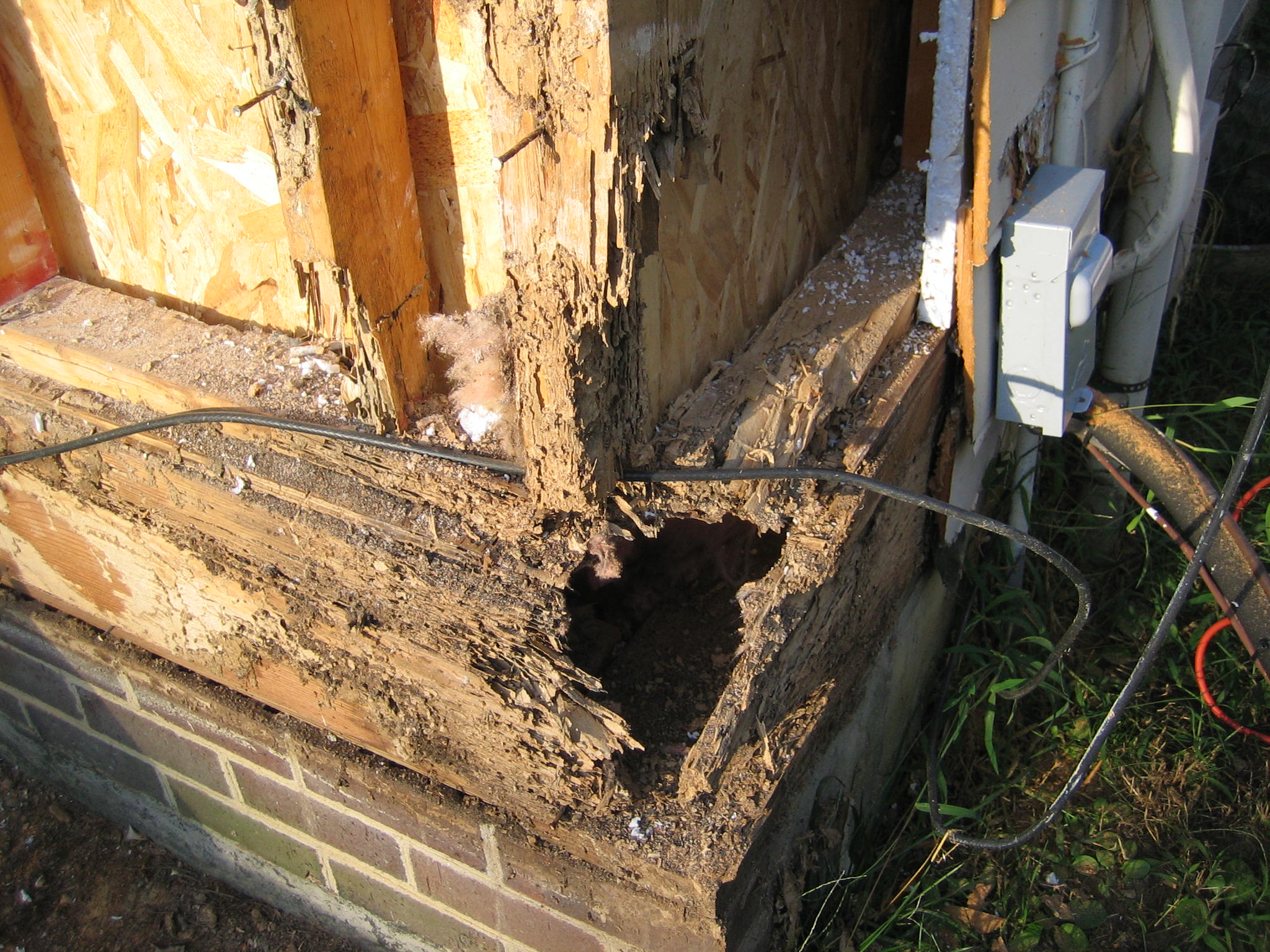If you live in a climate where termites are an issue, you may have experienced termite damage to your home. If you haven’t, you’ll want to know how to spot potential issues, who to call if you have termites, and how to prevent them from damaging your home and property.
How do you know if you have termite damage?
Termites eat through wood from the inside out, so by the time you notice damaged wood in your home, the termites may have been in your home for quite some time. Termites can damage all types of wood and also damage ceilings, laminate flooring, windows, shingled roofs, and joists. Termites bore tunnels through wood and can leave behind a visible network of trails or droppings inside or outside the home. Sometimes the damage may look like water damage, and the home may even have a faint mold or mildew smell.
Termites chew through wood and leave behind droppings and what may look like sawdust or mud. Although this may be easy to spot inside the home, outside the home it may just look like regular dirt or debris. Other obvious signs of termite damage are pitted or damaged wood, wood that sounds hollow when you knock on it, unexplained cracks in the ceiling or walls, or flooring that feels spongy or soft. Termites can also eat wood furniture.
Although termites do not eat concrete, they can easily squeeze through tiny cracks in damaged concrete and start gnawing on wood joists. Termite damage can easily go unnoticed in the crawlspace or under the porch until the termites bore their way inside the home and start leaving behind signs of their presence.
How to fix termite damage
Before you call a contractor to repair damage done by termites, you need to first get rid of the termite colonies in your home and around the property. Once you’ve taken care of the termite issue with a pest control professional, a professional contractor can help make necessary repairs. It’s important to work with someone who is skilled in termite repair and you’ll want to get several quotes to fully understand the scope of work that will need to be done. Termites can cause significant damage to important parts of the home like the foundation, window casings, floor joists and other structural elements. In addition to repairing the damaged wood, it may be prudent to make other changes to the home for example, making sure that wood siding isn’t touching the ground.
How to prevent termite damage
The best defense is a great offense, and this sentiment aptly applies to pest control. Preventative pest management, like a regular service and inspection, reduces the likelihood of a pest situation and can prevent issues before they become larger problems. Fortunately termites damage wood at a fairly slow pace, so just because you’ve seen termites or discarded wings does not mean that your home has significant damage. It does mean that you should assume termites may be starting to eat the wood of your home. Being proactive in protecting your home against termites is the best approach to preventing costly repairs.
Hiring a pest control professional can be a great first step in preventing termite damage. This person can assess your entire home and property and make professional recommendations for sealing cracks or regularly spraying the property to kill larvae. A professional is not only trained to spot potential pest issues, they often have the type of equipment that allows them to do their job quickly and easily. Your professional should point out what makes for an ideal breeding situation for termites like stacks of firewood near the home, wood siding touching the ground, other wood debris (like a boat) sitting on the property, furniture removal, or infested railroad ties often used in landscaping. These issues should be address to help prevent a termite infestation.
When building a new home, some professionals recommend using materials that do not contain cellulose and won’t be as attractive to termites. Having termite barriers and being aware of potential issues can help newer homes fend off this pest.
What you need to know about termites
The most damaging and prolific termite species found in the southeastern United States, as well as Hawaii, is the Formosan termite, part of the Rhinotermitidae family. This type of termite builds huge colonies (over a million) and can build their colonies on the ground as well as above ground in nests, like in the attic. This type of colony can seriously damage a home within two years or less.
A termite swarm is when a colony takes flight to reproduce, establish a new colony, and find new sources of food. Termite swarms often takes place in the spring when temperature rises and the ground is wet. But experts are quick to point out that swarm patterns can be influenced by the age or maturity of a colony, humidity levels, species, and other weather patterns. Swarmers actually grow wings for their job, and can look different in body color from the rest of the colony. This initial swarm may be the only one of the season however some colonies swarm all summer. Some swarms happen during the day and some occur at night.
According to Termites101.org there are several common species of termites in the United States. The Subterranean termite can survive colder temperatures and climate ranges and can be found in all states with the exception of Alaska. The Formosa termite is found in the southeastern states like Alabama, Florida, Georgia, Louisiana, Mississippi, North Carolina, South Carolina, Tennessee and Texas, as well as California and Hawaii. Drywood termites are found in states that do not have freezing temperatures. Refer to their interactive map to learn more about the types of termites in your state.
How To Keep Pest Control Costs Under Control
Image credit: Flickr




